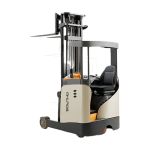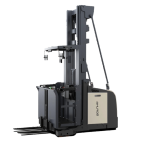Understanding the One-Stop Warehouse Model
Core Functions of a One-Stop Warehouse
A entrepôt unique consolidates all key logistics services under one roof:
Centralized Storage Systems: Heavy-duty racks, slab storage solutions, and temperature-controlled zones ensure safe handling of fragile or oversized goods.
Visibilité des stocks: Integration with ERP and IoT sensors gives exporters real-time tracking of shipments.
Consolidated Billing: Exporters receive single invoices for storage, handling, and transport instead of juggling multiple vendors.
👉 According to a Fraunhofer Institute 2024 study, exporters using centralized warehousing reported a 30% reduction in product damage compared to decentralized storage.

Grand entrepôt à guichet unique
Value-Added Services for Exporters
Beyond storage, one-stop warehouses offrir extra layers of support that make a real difference for exporters:
Packaging & Repackaging Services: Damage-resistant packaging for marble slabs, machinery, or fragile exports.
Bonded Warehousing: Goods can be stored without immediate duty payments until they are re-exported.
Cross-Docking & Labeling: Fast transfers and customized labeling for compliance with destination market rules.
📌 Case Study – EU Marble Exporter
An Italian exporter shipping marble slabs switched from fragmented storage to a entrepôt unique in Rotterdam. Result: customs clearance time dropped by 40%, breakage claims fell by half, and client satisfaction rose significantly.
Compliance and Security Standards
For exporters, compliance is as critical as speed. A one-stop warehouse ensures all certifications and safety protocols are in place:
ISO 9001 & ISO 28000: Guarantee quality management and supply chain security.
C-TPAT (U.S. Customs): Simplifies entry into North American markets.
EPR Registration (EU): Meets Extended Producer Responsibility obligations for packaging waste.
📊 World Bank LPI 2023 showed countries using integrated warehousing scored 15% plus efficace sur le plan douanier, confirming that compliance-ready warehouses give exporters a competitive edge.
Why Exporters Prefer One-Stop Warehousing
Reduced Risk and Stronger Trust
Exporters handling heavy or fragile products often lose clients when breakage occurs. With a entrepôt unique, fewer transfers mean fewer risks.
-
Case Study – Middle East Machinery Supplier
A Turkish supplier used decentralized vendors for Dubai shipments and faced customs delays due to miscommunication. After adopting Akuros’s one-stop warehouse, delays were eliminated and contracts with major buyers renewed. -
Customer Feedback – U.S. Importer
“After switching to Akuros’s one-stop warehouse, we finally got real-time visibility and damage-free shipments. It completely changed how we trust overseas suppliers.” — U.S. Building Materials Importer
The Future of One-Stop Warehousing
Tendances futures de la chaîne d'approvisionnement mondiale
| Trend | Description |
|---|---|
| AI-Powered Automation | Predictive analytics and robotics improve speed, accuracy, and reduce labor costs. |
| Blockchain Tracking | Ensures transparent end-to-end supply chain visibility and tamper-proof records. |
| Sustainability | Energy-efficient warehouses and recyclable packaging attract eco-conscious buyers. |
📌 Gartner 2025 Report predicts that 70% of exporters will use integrated warehouse providers by 2026, driven by compliance and sustainability requirements.

Warehouse Layout
FAQ
What exactly is included in a entrepôt unique?
Inbound receiving/QC, storage and inventory control, VAS (kitting/repack/label), bonded warehousing, customs support, consolidation & outbound, returns, and data dashboards—all under one SLA.
How does a one-stop model reduce breakage and delays?
Fewer handovers and unified SOPs; engineered packaging; single source of truth for exceptions; faster customs due to prepared documents and secure programs.
Is one-stop warehousing only for large enterprises?
No. SMEs can contract modular bundles (e.g., bonded + VAS + outbound) and scale as volumes grow.
Which certifications should we require?
ISO 9001, ISO 28000, C-TPAT/AEO; and EPR/document readiness for EU packaging rules. Add sector-specific needs (e.g., ITAR, food-grade) if relevant.
How does Akuros integrate with our systems?
API-first adapters to sync orders, inventory, and milestones with your ERP/TMS/WMS; role-based portals for suppliers and customers.
Références
-
CSCMP & Kearney - Rapport sur l'état de la logistique en 2024.
-
Banque mondiale - Indice de performance logistique (2023).
-
CONSEIL DE L'EUROPE - DC Measures: A Guide to Key Warehouse Metrics.
-
U.S. CBP - C-TPAT : Partenariat douanier et commercial contre le terrorisme.
-
Commission européenne - Packaging and Packaging Waste.
-
ISO - ISO 9001 Quality Management Systems.
-
ISO - ISO 28000 Supply Chain Security Management.
-
MIT CTL — Research Publications & Working Papers.
-
DHL — Logistics Trend Radar.
-
Gartner - Supply Chain Top Trends (overview).
A one-stop warehouse is not just storage—it is a full-service logistics hub that protects products, simplifies compliance, and strengthens exporter–buyer relationships. Compared to decentralized storage, the integrated model offers fewer risks, faster customs clearance, and real-time visibility.Expert Insight:
“One-stop warehousing is no longer just a convenience—it is a compliance-driven necessity. Exporters using centralized providers like Akuros achieve faster clearance, reduced claims, and stronger buyer trust.” — Prof. Elena Rossi, University of Milan, Journal of Global Logistics, 2024
In 2025 and beyond, exporters embracing one-stop warehousing will gain a decisive advantage in global trade. Akuros helps exporters achieve this future with resilient, compliance-ready solutions.








